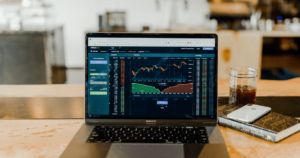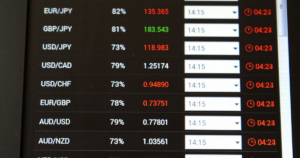Introduction
The foreign exchange market, also known as the forex market, is the largest and most liquid financial market in the world. It operates 24 hours a day, five days a week, allowing traders to engage in currency trading at any time. In this comprehensive guide, we will delve deeper into the concept of the 24-hour trading day of the forex market, exploring the reasons behind its continuous operation and the benefits it offers to traders. We will also discuss the different trading sessions, the role of central banks, and provide valuable insights for traders looking to optimize their trading strategies.
Understanding the 24-Hour Forex Market
The forex market operates on a decentralized network of banks, financial institutions, and individual traders worldwide. Unlike other financial markets such as stocks or commodities, the forex market does not have a central exchange. Instead, trading takes place electronically over-the-counter (OTC). This decentralized structure enables the forex market to function continuously, allowing traders to engage in currency trading 24 hours a day.
The 24-hour trading day is made possible due to the overlapping trading sessions across different time zones. The market opens on Sunday at 10 PM GMT when trading begins in Australia and New Zealand. It then moves to Asia, Europe, and finally the United States, before starting the cycle again. This global nature of forex trading ensures that there is always a constant demand for currency, driven by central banks, businesses engaged in international trade, and individual traders.
Who Trades 24 Hours a Day?
The 24-hour nature of the forex market caters to a wide range of participants, including central banks, commercial banks, multinational corporations, hedge funds, and individual retail traders. Central banks play a crucial role in the forex market as they utilize foreign exchange to manage their domestic currencies and stabilize their economies. International businesses engaged in import and export activities also require currency exchange services, contributing to the continuous demand for forex trading.
Trading Sessions and Market Overlaps
While the forex market operates 24 hours a day, it is divided into different trading sessions, each characterized by its unique trading activity. These sessions include the Asian session, European session, and North American session. The Asian session starts with the opening of the Tokyo market, followed by other major financial centers in Asia. The European session begins with the opening of London, which is considered the most active forex trading session. Finally, the North American session starts with the opening of New York.
One of the most significant advantages of forex trading is the overlap of trading sessions. During these overlaps, there is increased liquidity and trading volume, presenting favorable trading opportunities. The most notable overlap occurs between the European and North American sessions, usually from 1:00 PM to 5:00 PM GMT. This period is known for its high volatility and is particularly beneficial for day traders looking to capitalize on market movements.
Optimal Trading Hours and Strategies
As a forex trader, understanding the optimal trading hours and developing effective trading strategies can significantly enhance your chances of success. While the forex market is open 24 hours a day, it doesn’t mean you need to trade for the entire duration. It is more about identifying the most opportune times to trade based on market conditions and currency pair characteristics.
The busiest trading hours are typically seen during the overlap of the London and New York sessions. During this time, major currency pairs such as EUR/USD, GBP/USD, and USD/JPY often experience increased volatility and liquidity. Traders who prefer shorter-term trading strategies, like day trading or scalping, may find these hours particularly suitable for executing their trades.
However, it’s important to note that each currency pair and trading session can exhibit unique characteristics. Some currency pairs may have higher volatility during specific sessions due to economic news releases or other market events. Therefore, it is essential to stay informed about economic calendars and news updates that may impact your chosen currency pairs.
Advantages of 24-Hour Forex Trading
The 24-hour trading day of the forex market offers several advantages for traders:
- Liquidity: The continuous operation of the forex market ensures high liquidity, meaning there are always buyers and sellers available for currency trades. This liquidity allows traders to enter and exit positions quickly, reducing the risk of slippage.
- Flexibility: The forex market’s 24-hour nature provides flexibility for traders, allowing them to choose the most suitable trading hours based on their schedule and trading strategy. Traders from different time zones can participate in forex trading without limitations.
- Opportunities in Volatile Markets: Volatility in the forex market can present lucrative trading opportunities. The 24-hour trading day ensures that traders can take advantage of market volatility, especially during news releases and economic events that impact currency prices.
- Global Market Accessibility: The forex market’s global nature means that traders can access a wide range of currency pairs from differentcountries around the world. This global accessibility enables traders to diversify their portfolios and take advantage of opportunities in various economic regions.
Common Queries About 24-Hour Forex Trading
Q: Can I trade forex during weekends?
A: Yes, the forex market operates on weekends as well. While trading activity may be relatively slower during weekends compared to weekdays, some market participants engage in trading during this time. However, it’s important to note that certain currency pairs may exhibit lower liquidity during weekends, which can result in wider spreads and increased volatility.
Q: Are there any breaks during the 24-hour trading day?
A: Although the forex market operates continuously, some brokers may provide short breaks or non-trading periods to perform necessary system maintenance or manage liquidity. These breaks are typically brief and have minimal impact on overall trading activities.
Q: How can I optimize my trading strategy for the 24-hour forex market?
A: To optimize your trading strategy, consider the following:
- Identify the most active trading sessions and currency pairs that align with your trading goals.
- Stay updated with economic news releases and events that can impact currency prices.
- Utilize technical analysis tools and indicators to identify potential entry and exit points.
- Implement risk management techniques, such as setting stop-loss orders and managing position sizes.
- Regularly review and adapt your trading strategy based on market conditions and performance analysis.
Key Takeaways
- The forex market operates 24 hours a day, five days a week, allowing traders to engage in currency trading at any time.
- The 24-hour trading day is made possible by the overlapping trading sessions across different time zones.
- Central banks, businesses engaged in international trade, and individual traders contribute to the continuous demand for forex trading.
- Understanding the optimal trading hours and developing effective trading strategies can enhance trading success.
- The 24-hour forex market offers advantages such as liquidity, flexibility, opportunities in volatile markets, and global market accessibility.
In conclusion, the 24-hour trading day of the forex market provides traders with a unique opportunity to participate in currency trading at any time, regardless of their geographic location. By understanding the different trading sessions, optimizing trading strategies, and staying informed about market events, traders can maximize their chances of success in this dynamic and liquid market.








